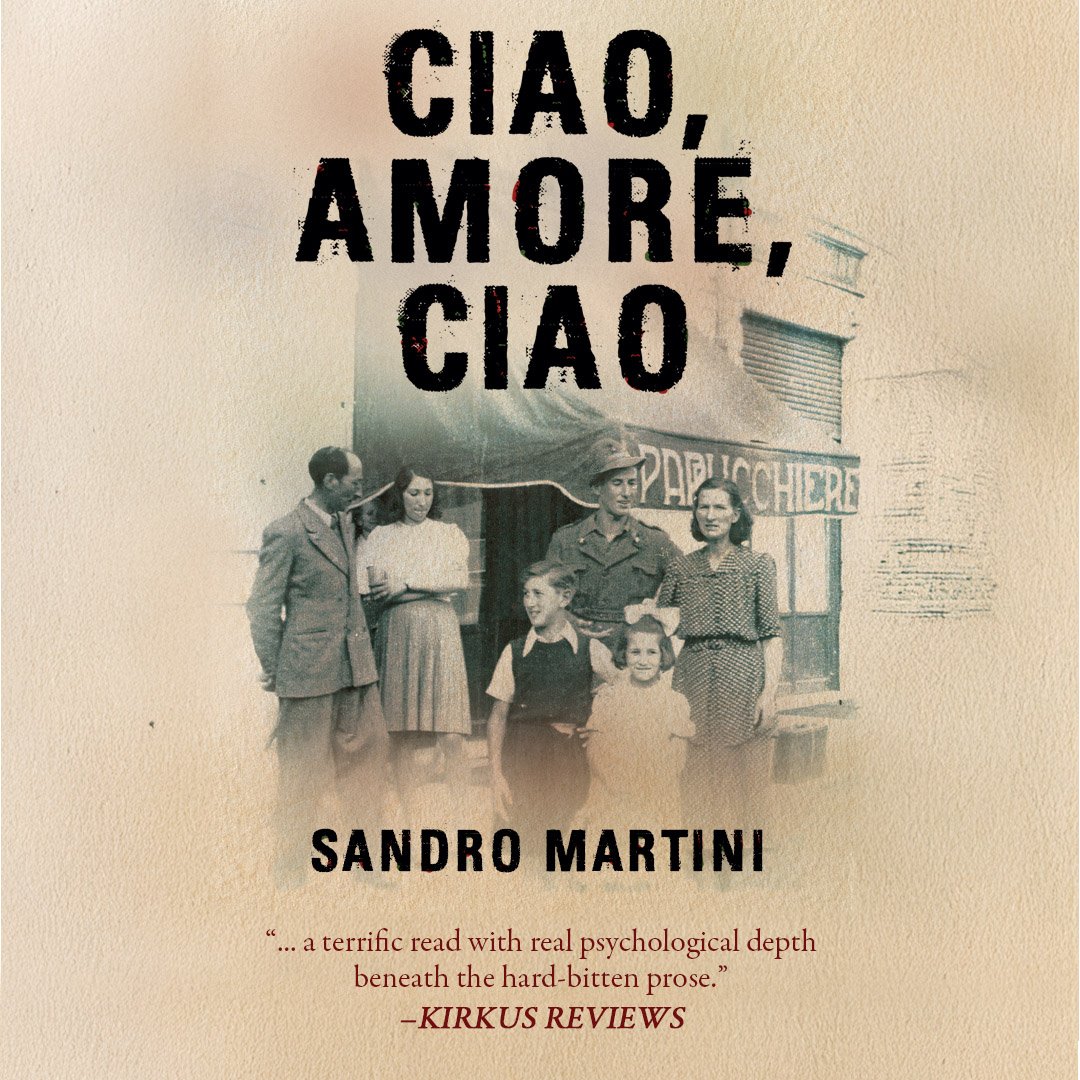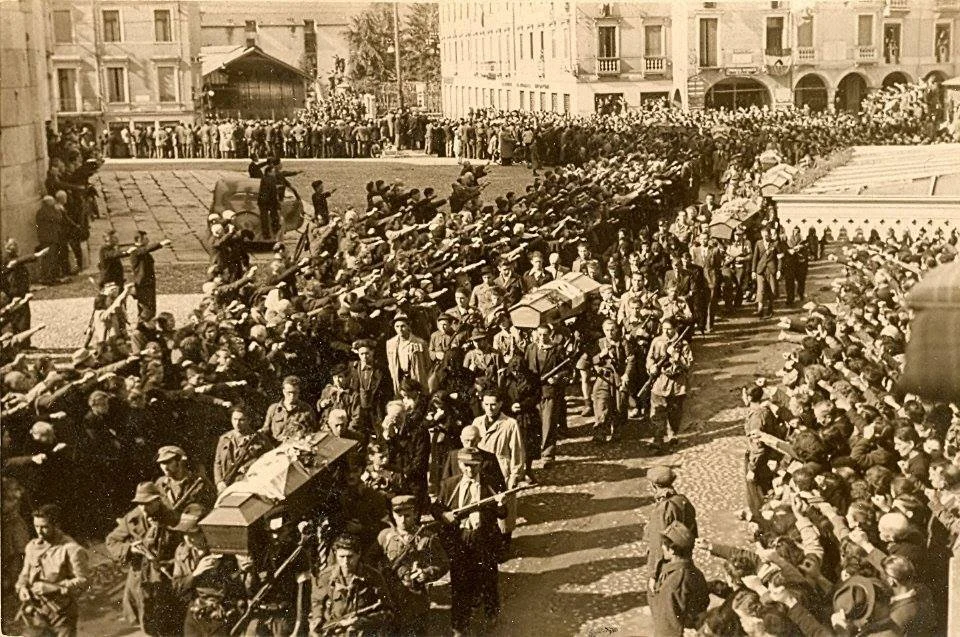The Small Town Mystery That Made International Headlines
Ciao, Amore, Ciao had an easy birth: the first draft came in about two months. Easy because all I had then was pain and my pen. My notebooks are still stained by tears. But that’s another story for another day. Central to its birth, though, were two events. The one was my dad’s passing. And the other was my uncle, whose grave I went to find three days after my dad died.
It’s then when I found Germano “Turco” Baron’s grave, and a seed was watered for a novel that’d been planted in me since childhood. In that vague, never told but hinted at story of my uncle’s vanishing in the winter of 1942.
Germano “Turco” Baron’s grave in Schio
For two decades, my dad had always told me he’d take me to see the grave of his brother, Alessandro, who’d vanished into the ice fields of Russia along with a 100,000 other kids. He never did. Who knows, maybe because I never did show enough interest. We had an awkward relationship. My dad was always a mystery to me, and that generation never spoke about the war. Not really.
So less than a week after he passed, I decided to head for the Chiesa SS Trinità Sacrario Militare (the Military Cemetery) in Schio in search of an uncle whose name was mine.
Alessandro Martini.
It’s an odd feeling, searching for your own name in a cemetery. I had no idea where he was buried. And when I was say “buried”, I don’t mean physically. His body never came home from Russia, so they buried air and stuck a name on it. Which is why he’s not on the official list of those interred at the cemetery. I guess even when he gave his life for Italy’s stupid, unwinnable war, his sacrifice wasn’t enough. Because those who cheer for war—then and now—are quick to forget the sacrifices and long to extoll its virtues.
Chiesa SS Trinità Sacrario Militare
Anyway, as I was searching through the names of thousands and thousands of boys killed in battles no one even remembers anymore, I came across a grave behind the church. Providence, I guess. I read the name—Germano “Turco” Baron—and thought, “that’s a cool name”. And the face on the old grave was somewhat arresting too—a Che Guevara-like figure staring out at me, a photo that wasn’t a portrait at all—it seemed a photo taken at random, of a bearded, good-looking man in his twenties.
Then I noted the date of his passing—8 July 1945—and realised he’d died on the day of the infamous Schio Massacre (that would make headlines in the New York Times, so fierce had been its brutality).
And just like that, I knew the book I was about to write. About my dad, and his brother, and all hooked together by this stranger here in the graveyard.
After that, I did the research and discovered that, in 1994, the President of the Republic, Oscar Luigi Scalfaro, had awarded Baron the highest award for military valour, half-a-century after his death.
But in reading the commendation, I found an intriguing line that hinted at the real mystery behind his death.
“Animated by a high patriotic spirit, from the beginning he went up into the mountains, where he organized the first armed formations of the area, which he then grouped into a fierce Brigade, of which he himself took command, leading it successfully in numerous difficult and risky actions. Always first where the fight was most intense and the danger was greatest, twice wounded in combat, for the epic deeds he accomplished, for his indomitable courage, for his skill as a commander, for the great sense of humanity and justice that permeated his every action, he was adored by his men and venerated by the local population, who saw in him the figure of the legendary hero. While he was already rejoicing for the liberation of the Fatherland, to which he had devoted himself with great ardour, he died in service in the fulfilment of his duty.”
Funeral for those killed in the massacre, there amidst the ruins of Schio
“He died in service in the fulfilment of his duty” was an interesting little anecdote to his death. Because what I learnt, as I researched what little fragments were left, was that his death had occurred on the very night of the massacre. Which led me down an intriguing path: had he died because he was with the partisans who’d perpetrated the massacre … or had he died trying to stop it? Baron had form as both a hardened partisan and soldier as well as a man of peace wh’od tried to stop an execution of Nazis in April of that same year.
Baron had also been one of the few to return from that icy hell in Russia that’d swallowed up my uncle and 100,000 other boys stuck at the gates of Stalingrad. And he, like my uncle, had been with the “Julia” Alpini, who’d been virtually wiped out in the Russian counter-offensive.
Even more intriguing? As I began looking at the US Army CID investigation, I realised that they’d initially focused a lot of attention on what had happened to Germano Baron on the night of the massacre.
Not surprising, of course, because Baron was a big player in the weeks after Italy’s liberation: he’d made a name for himself as the commander of a battalion who’d attacked the National Republican Guard at Tonezza del Cimone on 15 July 1944, and he’d been part of the partisans who’d liberated Schio on April 29, 1945 (one of only two towns in Italy that was liberated without Allied help).
John Valentino, from Altoona, PA, an Italian-American and head of the US Army CID Investigators
He’d also signed the “peace treaty” with the Nazis in the Vicenza region, securing them safe passage in exchange for their immediate surrender. But that safe passage was not granted to the Nazis (including a Ukranian battalion) and Italian fascists who’d been responsible for the Pedescala Massacre in April 1945.
Baron was consulted as to the fate of the Nazis and fascists captured at Pedescala on April 29 and legend has it that he’d wanted to honour his agreement with the Nazis, but was overruled by Giuseppe “Ivan” Costa, another survivor from the Russian campaign. The prisoners were summarily executed and thrown into sinkholes at Grotta della Rossetta, in Tonezza del Cimone.
A lot of history, none of it pleasant, and behind it all was the shadow of the British and US intel agencies. But that’s the fun part about historical fiction—you get to tie the pieces together with Occam’s razor.
Partisans: many were hardened survivors of the ill-fated Russia Campaign
And so we come back to my uncle and me, on that cold day in March, alone, and surrounded by the dead.
I found him in the end. He is “buried” inside the church itself, his name on a back wall alongside a dozen other boys of his class (1922, same as Baron) who never came home. Just a name. And another mystery; a boy who simply vanished off the face of the earth. A mystery that I have yet to solve. Every year in the battlefields where the Italians fought and died fleeing the Russian counter-offensive, locals find name tags from the Italian dead—all of whom were burnt on the ice because they couldn’t be buried.
But as for the fate of my uncle? A mystery that I guess I too will take with me …
Ciao, Amore, Ciao will be released March 27. Almost to the day, six years after I found that grave. Because the first draft came fast: but the research took another half-decade.
All that’s left of a senseless sacrifice on the steppe




















